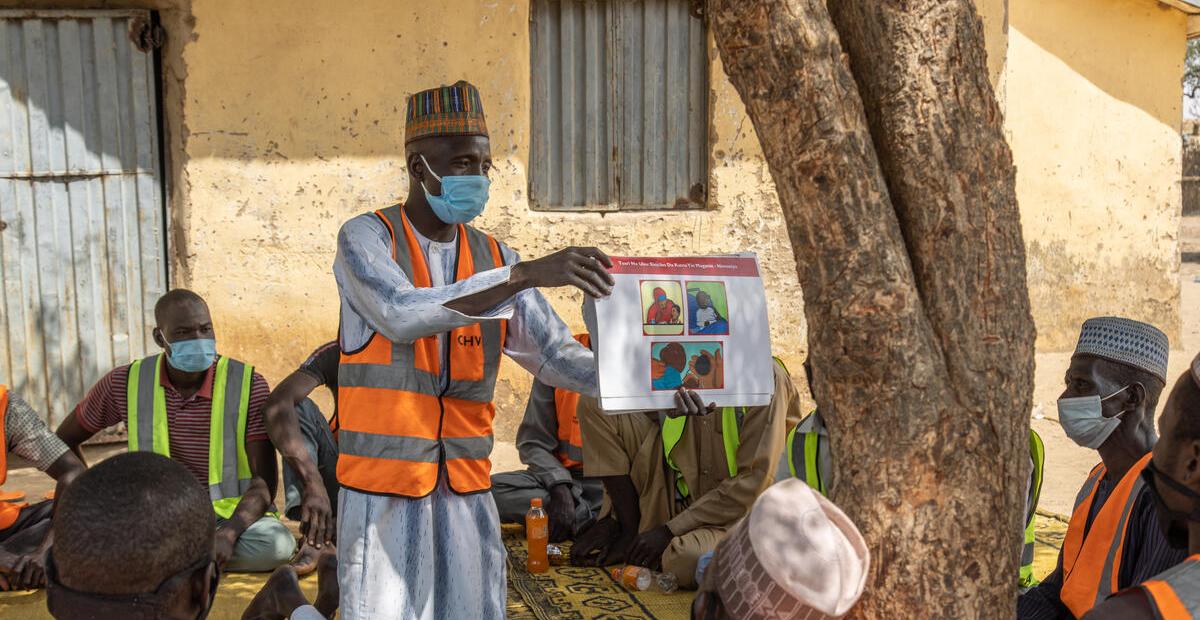RFA/Design

RFA/Design Stage
Before the award, applicants need to respond to the request for applications with a detailed proposal design. First, organizations need to get to know the R&I model and expectations for R&I proposals. Then the proposal will include a detailed technical narrative and a theory of change (TOC). Tools on this page help IPs with this process. Click on each activity below for additional details and resources.
- Understanding R&I
-
For partners who have not used the R&I model before, it is important to understand the reason for it and key expectations for R&I RFSAs. This will help applicants make sure the proposal is aligned.
R&I Overview (Cross-Cutting)
This presentation provides RFSA staff with a brief overview of the rationale for the R&I model, its benefits, experiences to date, and key activities and events that are meant to take place during the refinement period. Recommended especially for RFSA staff who are new to the R&I model, it can help you understand the approach and gain clarity on expectations for the refinement period.
- Proposal Development
-
Since the R&I model is unique, organizations need to design a proposal that reflects the R&I approach.
Participant Financial Analysis for Resilience Food Security Activities (Livelihoods: Ag. / Off-farm)
This reference manual is to help those drafting RFSA applications to understand how to satisfy the Participant Financial Analysis requirement in RFSA applications. It also offers suggestions for additional considerations, best practices, and tips to ensure consistency and quality. It includes sample calculations, which can be used as a template.
Permagarden Technical Manual (Third Edition) (Ag. / Seeds)
This manual provides proposal development and program implementation teams with the full details of the Permagarden Approach (a climate-smart/climate-resilient agriculture approach at the garden level) to inform program design and implementation and provides tools and resources teams can use in support of program rollout.
Integrating Permagarden Approach: A Tip Sheet for Programs (Ag. / Seeds)
This tipsheet can help proposal development teams think through the design, implementation, and budget implications and considerations to integrating the Permagarden Approach in their proposed programs.
Resilience Design in Smallholder Farming Systems Approach (Ag. / Seeds)
This manual provides proposal development and program implementation teams with the full details of the RD approach (an approach to climate-smart/climate-resilient agriculture at the field level) to inform program design and implementation and provides tools and resources teams can use in support of program rollout.
TOPS Permagarden Toolkit (Ag. / Seeds)
This manual provides proposal development and program implementation teams with the full details of the Permagarden Approach (a climate-smart/climate-resilient agriculture approach at the garden level) to inform program design and implementation and provides tools and resources teams can use in support of program rollout.
Better Gender Outcomes in Food Assistance through Complementary and Multi-Modal Programming (Inclusion: Gender, Youth)
This tip sheet is important for gender staff to read to help develop high-quality programming. It is excerpted from the research report, "Better Gender Outcomes in Food Assistance through Complementary and Multi-Modal Programming", and gives promising practices by the cycles of project cycle management, as well as at the response level. Additionally, there are expert tips and wisdom practices that support the use of a gendered approach in development or humanitarian programming using multi-modal approaches.
- TOC Development & Prioritization of Behaviors
-
The Theory of Change (TOC) shows how the RFSA thinks change will happen. Applicants should develop a TOC with strong logic based on evidence. RFSAs will use their TOC throughout the program cycle. The TOC describes how all outputs from the RFSA and others will help the RFSA reach the outcomes and the activity goal. The TOC should include contextual factors that are necessary for change to occur. A strong TOC will show how key outcomes will be sustained after the end of the activity. To do this, it should show how other actors will continue providing inputs and services and how communities and participants will maintain important behaviors. Part of this process includes prioritizing which behaviors to focus on.
Theory of Change Training Curriculum (MERL)
Visit this page to access a variety of resources to support TOC development, including TOC training materials, a facilitator's guide for TOC development, a quality check booklet, and more. These resources are meant to help program staff understand TOC basics, design a TOC with strong logic, and carry out regular reviews. As the TOC is often a key tool used in the R&I model to help refine the activity design and implementation plans, starting with a strong foundation and regularly reviewing the TOC is integral for all RFSAs.
Designing for Behavior Change: For Agriculture, Natural Resource Management, and Gender (Inclusion: Gender, Youth)
Gender, Youth, and Social Dynamics Advisors and SBC Advisors can deploy this practical behavioral framework and training guide to give field staff and managers the skills and tools to apply a behavioral approach to designing community development programs - particularly in the areas of agriculture, natural resource management, and gender.
Refinement Period Implementation (Years 2-5)